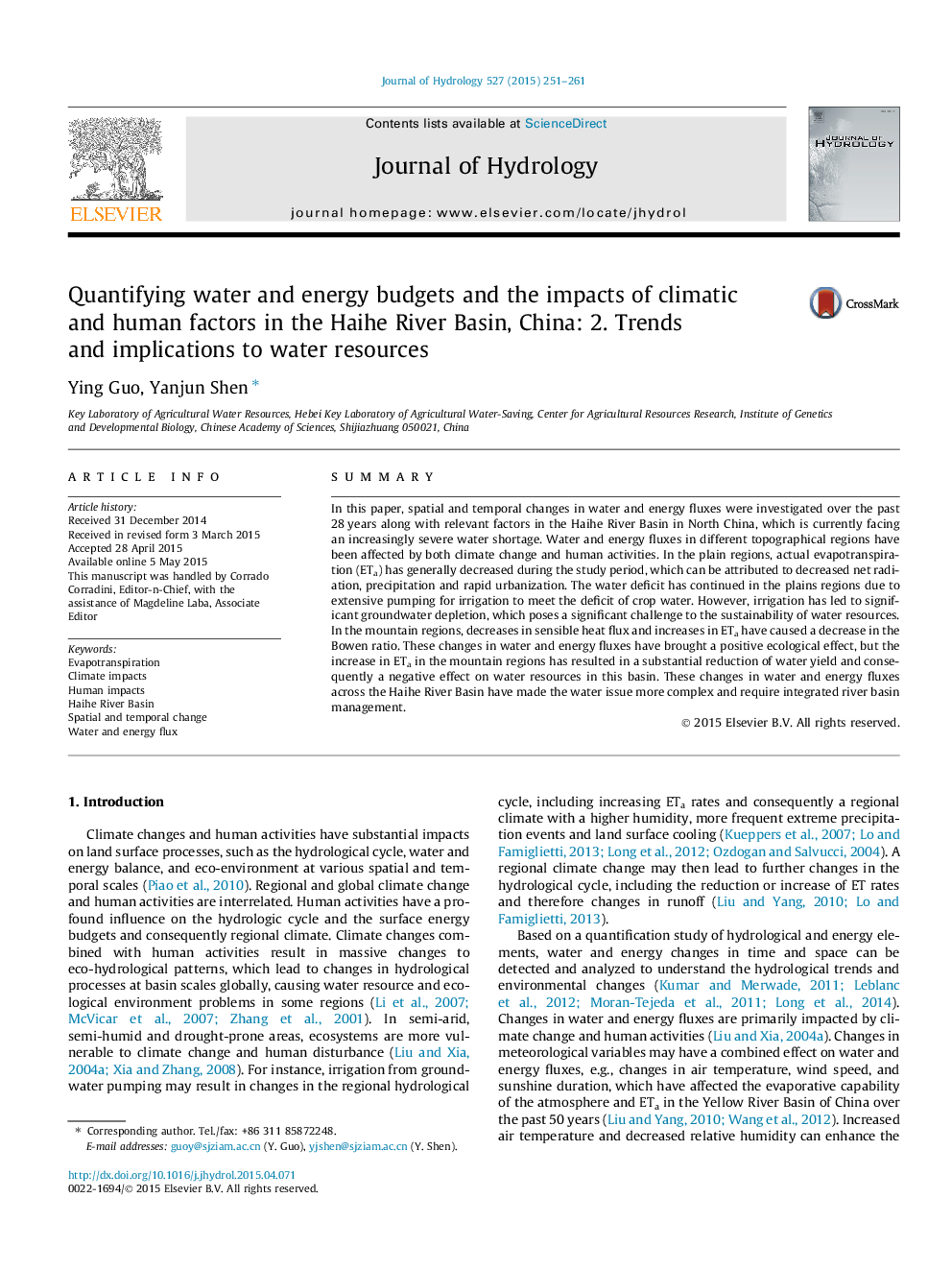| Article ID | Journal | Published Year | Pages | File Type |
|---|---|---|---|---|
| 6411073 | Journal of Hydrology | 2015 | 11 Pages |
â¢28 Year time series of water/energy budget changes in the HRB were analyzed.â¢ET increased in the mountains and decreased in the plains of HRB.â¢Changes in climate and human activities impacted water/energy budgets in the HRB.â¢It is drier and hotter in the plain due to Bowen ratio and temperature increasing.â¢ET increase in the mountains reduced the water yield and lead to water shortage.
SummaryIn this paper, spatial and temporal changes in water and energy fluxes were investigated over the past 28Â years along with relevant factors in the Haihe River Basin in North China, which is currently facing an increasingly severe water shortage. Water and energy fluxes in different topographical regions have been affected by both climate change and human activities. In the plain regions, actual evapotranspiration (ETa) has generally decreased during the study period, which can be attributed to decreased net radiation, precipitation and rapid urbanization. The water deficit has continued in the plains regions due to extensive pumping for irrigation to meet the deficit of crop water. However, irrigation has led to significant groundwater depletion, which poses a significant challenge to the sustainability of water resources. In the mountain regions, decreases in sensible heat flux and increases in ETa have caused a decrease in the Bowen ratio. These changes in water and energy fluxes have brought a positive ecological effect, but the increase in ETa in the mountain regions has resulted in a substantial reduction of water yield and consequently a negative effect on water resources in this basin. These changes in water and energy fluxes across the Haihe River Basin have made the water issue more complex and require integrated river basin management.
